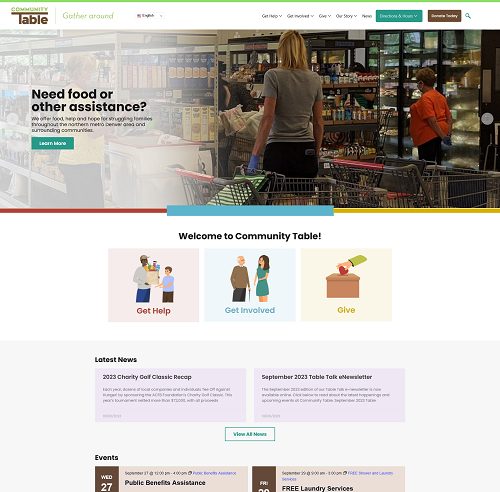Unleashing the Power of AI in your SEO campaigns!
In the ever-evolving landscape of SEO, Artificial Intelligence is the game-changer we’ve all been waiting for! Used properly, it can streamline processes, generate templates and get your first draft ready. How AI Transforms SEO: Smart Content Creation: AI analyzes user behavior to create content that resonates, boosting engagement and SEO ranking. Predictive Analytics: Anticipate trends […]
EduCyber Launches Two Websites

Last year EduCyber began working with Community Table to modernize and streamline their website. Earlier this year we launched that new site and continue to work with them as their organization grows and changes. Create unique icons to organize services As a part of the project, we created some specific iconography to help navigate through […]
Unanticipated Events and Internet Marketing
It is the middle of May and outside it is snowing. Like many here in Colorado I can only shrug and say “Colorado weather!” although I suspect many folks across this country could say “<insert_your_state> weather!” But as I ponder this unanticipated weather event, it reminds me how so often, in Internet marketing, we face […]
Building Websites on WordPress
A few short years ago we built most of our websites on pages that were more or less static. If a customer wanted to try something called blogging, we would add a piece of software into the site that allowed them to do this. We had also been building sites on Content Management Software (CMS) […]
Blogging Basics
ХудожникИконописWas part of your New Year’s resolution to get back to blogging? Most of us know it is good for business. It keeps your site fresh. The search engines love new content. It helps you think about your business. But you’re just not sure what to do next? Here are some helpful hints: Post REGULARLY […]
Blogging and Consistency
You’ve heard the old adage that the road to heck is paved with good intentions. That appears to be especially true when it comes to blogging. During the design and development phase of sites we have customers who are all excited about the opportunity to blog. Then reality (and life) sets in. And that blogging […]
Setting Rules for Social Networking
There was a very good article on setting rules for social networking in the Denver Business Journal earlier this month. David Schachter, the author notes how seemingly easy it is to reach “billions of people instanteously” from your mobile device. Approaching the topic from a legal perspective – he is a lawyer after all – […]
8 Ways to Defeat The Evil Blogger’s Block
Most of the new websites we build these days include blogs. We love blogs because search engines love blogs. Adding a blog to their website is the single easiest way for a business to get more visitors. Plus, it gives the business owner a real-time way to communicate with their customers. Hit publish and your […]
